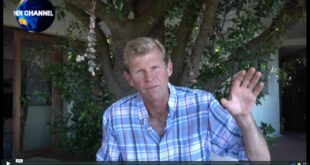Solar Power by Day and Night
This week on ENN, Jason Sole discusses three related technologies that show a glimpse of the world’s future power plants. Each of the three stories can be combined to create a picture of where the world could go if only we had the political will.
New Solar Panels That Work At Night
This is the ideal technology. A solar panel that works both during the day and at night and that’s exactly what was achieved by the Idaho National Laboratory in 2008. The theory operates on the principle of harvesting all visible light waves during the day like a normal solar panel but then utilising “nanoantennas” to absorb infrared radiation at night. Now note that this story was released in 2008, it has subsequently being struck from INL’s website but at least the initial media release is still available here: http://newatlas.com/researchers-developing-solar-technology-that-works-at-night/8574/ , here: http://engineering.missouri.edu/2011/08/nanoantenna-reinvents-solar-energy/ and here: http://inhabitat.com/solar-panels-work-at-night/
Bio-inspired energy storage: A new light for solar power
Add to this the breakthrough from RMIT in Melbourne and you can start to see where things are starting go. This pioneering work developed an electrode that could be added to current thin film solar panels so that when integrated with supercapacitors forms a solar module that generates power during the day stores the power for use either at night or when conditions are not ideal. Check the full article here: https://techxplore.com/news/2017-03-bio-inspired-energy-storage-solar-power.html
Low-cost ‘solar absorber’ promising for future power plants
The final pathway to a clean power future comes from this remarkable breakthrough. Utilising off the shelf or commercially available silicon solar cells, researchers developed a method to convert visible and ultraviolet light into electricity while at the same time retaining temperature stability.Check out the full story here: https://phys.org/news/2017-04-low-cost-solar-absorber-future-power.html
Thus if you look at all three potential technologies and combine the properties of each of them what you are essentially looking at is the power of the future. Initially I would image cost implications for the overall product would be quite large but as with traditional solar cells the economics of scale would eventually come to force and the price would sink through the floor.




2 comments
Pingback: ENN – Solar Power by Day and Night - Jason Sole - The Thinking Primate
Pingback: ENN – Solar Power by Day and Night | Mega Solar SA